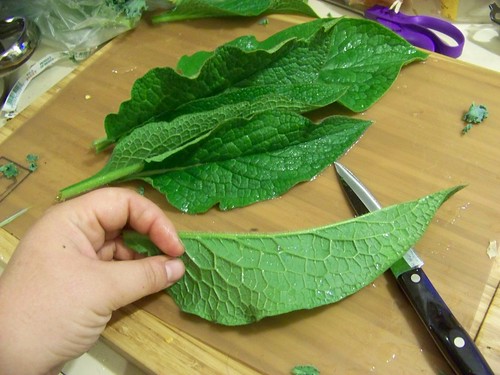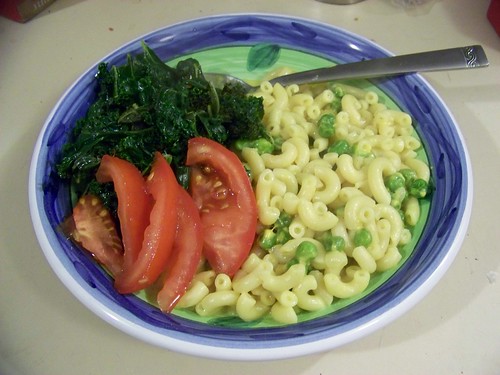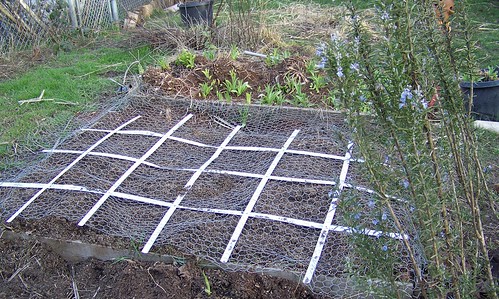Veggie Lima Bean Soup
1/2 pound dried lima beans, sorted, rinsed and soaked in water overnight.
For the veggie broth:
1/2 a yellow onion
2 stalks of celery, broken to fit in the pot
1 carrot, chopped in two or three pieces
1 small potato, scrubbed and quartered
2 cloves garlic, cut in half
Small bit of arame seaweed (optional)
A couple pieces of dried mushroom
1/2 tsp herbs de Provence and/or Italian seasoning
A couple peppercorns
Salt
Trimmings from the vegetables for the soup
For the soup:
Olive oil, butter and/or coconut oil
1 yellow onion, chopped
4 stalks celery, sliced
2 large carrots, chopped (note: should be about equal on those three)
2 cloves garlic, minced
herbs de Provence and/or Italian seasoning, red chili flakes if you'd like
black pepper and salt
2 tsp soy sauce
1 tbs lemon juice
red wine, Worcestershire sauce, vinegar
 Start by making the veggie broth. Cover all the vegetables and trimmings with water, bring to a boil and simmer for about 40 minutes. I didn't add very much salt to the broth because I am always afraid beans will stay hard if well salted. The above made about 2 quarts of broth.
Start by making the veggie broth. Cover all the vegetables and trimmings with water, bring to a boil and simmer for about 40 minutes. I didn't add very much salt to the broth because I am always afraid beans will stay hard if well salted. The above made about 2 quarts of broth.When the broth is done or mostly done, start heating the cooking oil over medium heat in a large enameled, cast iron dutch oven. Turn the oven on to 300 degrees. When the fat is hot add the vegetables and dried herbs. Add some salt and pepper at this time. Again, I under-salt because I'm afraid for the beans. Stir and cook until they are starting to turn golden brown. Add the garlic at this time and stir another minute until fragrant.
Strain the veggie broth into the soup pot and turn the heat up to high. When the broth is close to boiling add the drained lima beans, a splash of soy sauce, and a splash of lemon juice. When the soup is just coming to a boil put the lid on the dutch oven and put it in the oven to cook.
Check the beans at 1 hour to see if they are tender. If not, continue cooking and checking every 30 minutes. I didn't time mine but they couldn'tve take more than an hour and a half. When the beans are tender bring the pot out of the oven and adjust for seasoning. Add salt at this time, and maybe a splash of wine, more soy sauce, some Worcestershire sauce and/or vinegar. Hot sauce would be nice if you are into that kind of thing.
You can drop some tender greens like chard or spinach in the pot at this time, or add the raw or cooked greens to each bowl to get wilted. Serve with toast, croutons, sour cream, sauerkraut or any condiment that sounds good.
***
I actually really appreciate the pure and simple flavors in this soup. The beans are so soft and delicious. How did lima beans get a bad rap? I guess generations of moms have made spinach taste bad too. Criminal.
When I had some of this for my own lunch I fried up some bacon and crumbled that on top of the soup (ok, I also drizzled some bacon grease over top too...) If I were making this for myself I would do any number of the following:
*Use chicken stock instead of the veggie broth. Though, I gotta say, the veggie broth really does leave the dish very pure and light. But still, chicken broth for me.
*Add some bacon, sausage or chicken. Beans and pork are a classic combination, but again I love the pure flavor of this dish so I might use bone-in, skinless chicken thighs instead.
*Use chicken fat instead of the olive oil and butter.. though, refined coconut oil is a fine, neutral flavored oil for sauteeing veggies.
All that being said, this is delicious and as easy as falling off a log, especially if you have chicken stock in the freezer already. And it was greatly appreciated by my new mom friend and her boys.










 Sausage and Kale Quiche
Sausage and Kale Quiche